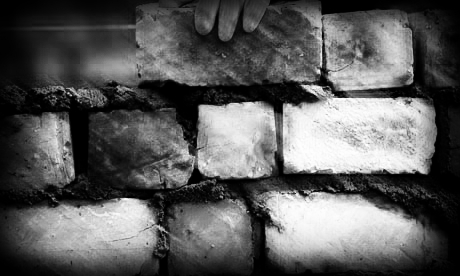 That Exotic Africa, the "Back to Eden" goal, the backwards Heart of Darkness, in need of the Great Green White Father to rescue them from their primitive E-Waste "e-waste hell". Ok, this is not just another insult blog. This contains some really terrific leads for academic researchers who want to publish something new about "e-waste" exports. I have some very new and interesting leads below.
That Exotic Africa, the "Back to Eden" goal, the backwards Heart of Darkness, in need of the Great Green White Father to rescue them from their primitive E-Waste "e-waste hell". Ok, this is not just another insult blog. This contains some really terrific leads for academic researchers who want to publish something new about "e-waste" exports. I have some very new and interesting leads below.I'm fooling around with some background research, looking at the growth in number of households in Nigeria which have televisions in use (World Bank), the number BAN and ITC and UNEP say are imported, the percentage of sales which UNEP says are used/secondary to new.
Guess what? Yet another data point. I don't have time to really polish the argument below, but it adds up to about 85-90% reuse.
The growth in the number and percentage of Nigerian households who own TVs correlates to two things:
- the number of units entrepreneurs like Joseph Benson shipped there (BAN, UNEP, USITC)
- the growth in use of internet and TV use in Nigerian households (World Bank)
- the percentage of e-waste from Nigeria's own cities (UNEP)
There's nothing exotic going on here. The "Great White Father", Jim Puckett, acts like some kind of a "no dancing dad", an Environmental Fundamentalist from Footloose II, a back-to-Eden, anti-growth, anti-globalization preacher, who has a right to point fingers at free market traders who obey the Basel Convention - which permits export for repair, something Jim voted against and lost. BAN adorns its NGO website with fire and brimstone photos of poor kids at dumps, and says those photos trump the data.
| J.Lepawsky photo, Accra (property of ... African) |
Hardly a case for the arrests of Hurricane Joe Benson, Hurricane Hamdy, or Hurricane Chiu.
Link to Cahil Milmo and BAN, months before the sting by Milmo on Benson. Follow up by Milmo, crowing over Benson's conviction of exporting TVs for dumping and burning.
UNEP found containers like Benson's, analyzed during his trial, were 91% reused... a higer reuse rate than brand new product. The rest of this blog shows how World Bank data could have exonerated Mr. Benson, and disproven BAN's "Digital Dump" allegations, without even the benefit of the UNEP sampling.
The eight men, whose firm’s operated across the country, were found to have been at the heart of a lucrative trade which sends tonnes of waste computers and other consumer durables to west Africa and Asia every year to be stripped of valuable metals in grim conditions, often by children.
Except the premise "to be stripped of valuable metals in grim conditions, by children" is completely false. That allegation was presented to the UK Independent by Basel Action Network (first link). It was disproven by UNEP. Like a modern day Mockingbird Robinson, Joe Benson has given up on the trial process. Below, I provide hard evidence that BAN's "statistic" was false to begin with, and allege that our society would never have taken the accusation seriously in the first place if the trade in used TVs was between two white men.One of the company owners, Joseph Benson, whose BJ Electronics toured civic waste sites picking up electronic goods to be sent illegally to Nigeria from east London, was convicted following an investigation by The Independent,Sky News and Greenpeace.




























